Tristan Needham is a British mathematician and professor of mathematics at the University of San Francisco.
Tristan Needham is a British mathematician and professor of mathematics at the University of San Francisco.
Tristan is the son of social anthropologist Rodney Needham of Oxford, England. He attended the Dragon School. Later Needham attended the University of Oxford and studied physics at Merton College, and then transferred to the Mathematical Institute where he studied under Roger Penrose. He obtained his D.Phil. in 1987 and in 1989 took up his post at University of San Francisco. [1] [2]
In 1993 he published A Visual Explanation of Jensen's inequality . [3] The following year he published The Geometry of Harmonic Functions, which won the Carl B. Allendoerfer Award for 1995. [4] [5]
Needham wrote the book Visual Complex Analysis, which has received positive reviews. [6] Though it is described as a "radical first course in complex analysis aimed at undergraduates", writing in Mathematical Reviews D.H. Armitage said that "the book will be appreciated most by those who already know some complex analysis." [7] In fact Douglas Hofstadter wrote "Needham's work of art with its hundreds and hundreds of beautiful figures á la Latta, brings complex analysis alive in an unprecedented manner". [8] Hofstadter had studied complex analysis at Stanford with Gordon Latta, and he recalled "Latta's amazingly precise and elegant blackboard diagrams". In 2001 a German language version, translated by Norbert Herrmann and Ina Paschen, was published by R. Oldenbourg Verlag, Munich.
In 2021, Needham published Visual Differential Geometry and Forms: A Mathematical Drama in Five Acts (Princeton University Press) [9] . (The original title was Visual Differential Geometry.) Much of this material was already developed in the writing of Visual Complex Analysis.
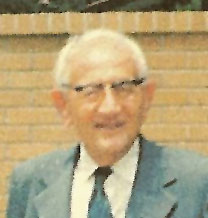
George Pólya was a Hungarian mathematician. He was a professor of mathematics from 1914 to 1940 at ETH Zürich and from 1940 to 1953 at Stanford University. He made fundamental contributions to combinatorics, number theory, numerical analysis and probability theory. He is also noted for his work in heuristics and mathematics education. He has been described as one of The Martians, an informal category which included one of his most famous students at ETH Zurich, John Von Neumann.

John Willard Milnor is an American mathematician known for his work in differential topology, algebraic K-theory and low-dimensional holomorphic dynamical systems. Milnor is a distinguished professor at Stony Brook University and one of the five mathematicians to have won the Fields Medal, the Wolf Prize, and the Abel Prize.
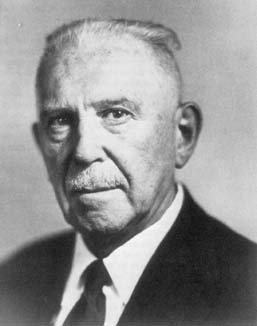
Solomon Lefschetz was an American mathematician who did fundamental work on algebraic topology, its applications to algebraic geometry, and the theory of non-linear ordinary differential equations.
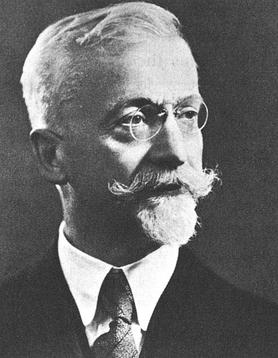
Élie Joseph Cartan was an influential French mathematician who did fundamental work in the theory of Lie groups, differential systems, and differential geometry. He also made significant contributions to general relativity and indirectly to quantum mechanics. He is widely regarded as one of the greatest mathematicians of the twentieth century.
In mathematics, the Chern theorem states that the Euler–Poincaré characteristic of a closed even-dimensional Riemannian manifold is equal to the integral of a certain polynomial of its curvature form.
Donald Clayton Spencer was an American mathematician, known for work on deformation theory of structures arising in differential geometry, and on several complex variables from the point of view of partial differential equations. He was born in Boulder, Colorado, and educated at the University of Colorado and MIT.

Oswald Veblen was an American mathematician, geometer and topologist, whose work found application in atomic physics and the theory of relativity. He proved the Jordan curve theorem in 1905; while this was long considered the first rigorous proof of the theorem, many now also consider Camille Jordan's original proof rigorous.

Serge Lang was a French-American mathematician and activist who taught at Yale University for most of his career. He is known for his work in number theory and for his mathematics textbooks, including the influential Algebra. He received the Frank Nelson Cole Prize in 1960 and was a member of the Bourbaki group.
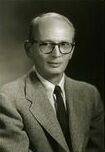
Salomon Bochner was an Austrian mathematician, known for work in mathematical analysis, probability theory and differential geometry.

Geometry of Complex Numbers: Circle Geometry, Moebius Transformation, Non-Euclidean Geometry is an undergraduate textbook on geometry, whose topics include circles, the complex plane, inversive geometry, and non-Euclidean geometry. It was written by Hans Schwerdtfeger, and originally published in 1962 as Volume 13 of the Mathematical Expositions series of the University of Toronto Press. A corrected edition was published in 1979 in the Dover Books on Advanced Mathematics series of Dover Publications (ISBN 0-486-63830-8). The Basic Library List Committee of the Mathematical Association of America has suggested its inclusion in undergraduate mathematics libraries.

Carl Barnett Allendoerfer was an American mathematician in the mid-twentieth century, known for his work in topology and mathematics education.

Phillip Augustus Griffiths IV is an American mathematician, known for his work in the field of geometry, and in particular for the complex manifold approach to algebraic geometry. He was a major developer in particular of the theory of variation of Hodge structure in Hodge theory and moduli theory. He also worked on partial differential equations, coauthored with Shiing-Shen Chern, Robert Bryant and Robert Gardner on Exterior Differential Systems.

Shoshichi Kobayashi was a Japanese mathematician. He was the eldest brother of electrical engineer and computer scientist Hisashi Kobayashi. His research interests were in Riemannian and complex manifolds, transformation groups of geometric structures, and Lie algebras.

Jeremy John Gray is an English mathematician primarily interested in the history of mathematics.
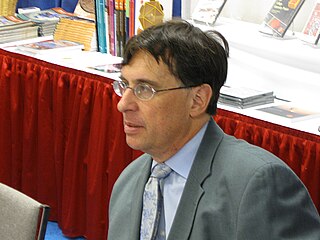
Steven George Krantz is an American scholar, mathematician, and writer. He has authored more than 280 research papers and published more than 135 books. Additionally, Krantz has edited journals such as the Notices of the American Mathematical Society and The Journal of Geometric Analysis.
Theodore Frankel was a mathematician who introduced the Andreotti–Frankel theorem and the Frankel conjecture.
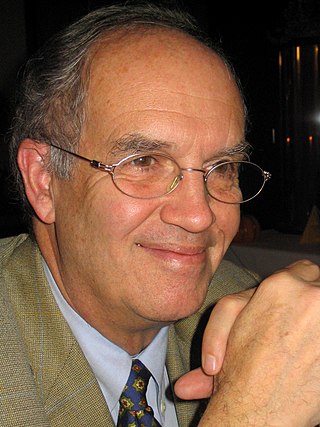
Raymond O'Neil Wells Jr., "Ronny", is an American mathematician, working in complex analysis in several variables as well as wavelets.
Michael Eugene Taylor is an American mathematician, working in partial differential equations.
Anthony Joseph Tromba is an American mathematician, specializing in partial differential equations, differential geometry, and the calculus of variations.
The Colloquium Lecture of the American Mathematical Society is a special annual session of lectures.